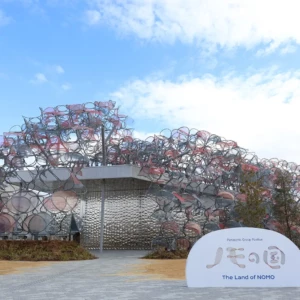What Makes Gion So Famous? How Long Does It Take to Walk Around Gion?
【この記事にはPRを含む場合があります】

Gion is known as the “flower district”(花街 = Hanamachi, an olden Japanese word that roughly equates to “red light district”) of Kyoto, the ancient capital of Japan.
Gion is one of the most popular sightseeing spots in Kyoto, especially as an area where you can feel the atmosphere of the ancient capital.
The area is dotted with attractive spots such as “ochaya” (お茶屋 = teahouses) where maiko and geiko entertain visitors, restaurants, matcha (powdered green tea) sweets stores, and the “Gion Corner” where visitors can easily enjoy traditional Japanese performing arts.
In this article, I, a Kyoto resident, will tell you about the charms of the Gion area and how long it takes to stroll around.
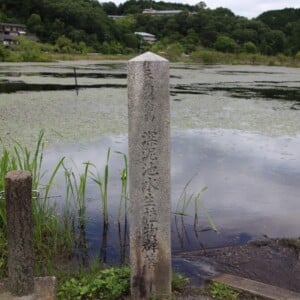
- What is Gion famous for?
- How long does it take to walk around Gion?
- The Gion Shopping Street is lined with matcha green tea sweets stores!
- "Hanamikoji” is where you will find ‘ochaya’ (teahouses) with maiko and geiko
- Gion Kobu Kaburenjo is where the maiko and geiko perform
- Experience Zen at Kenninji Temple, the oldest Zen temple in Kyoto
- Yasaka Shrine, known for the Gion Festival
- Gion Shirakawa River, one of the most emotional places in Kyoto
- Enjoy a stroll in Gion, the most elegant area in Kyoto!
What is Gion famous for?
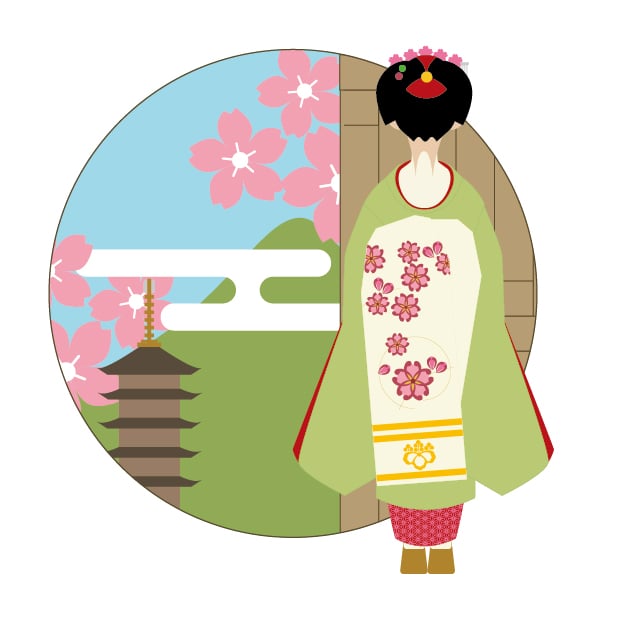
Gion refers to the area in Kyoto City between Gion-Shijo Station on the Keihan Line and Yasaka Shrine, along Shijo Street.
Gion is especially famous for its ochaya (teahouses), where maiko and geiko entertain their customers, and the rows of wooden buildings with red lanterns create a unique atmosphere.
▼ One of the ochayas in Gion
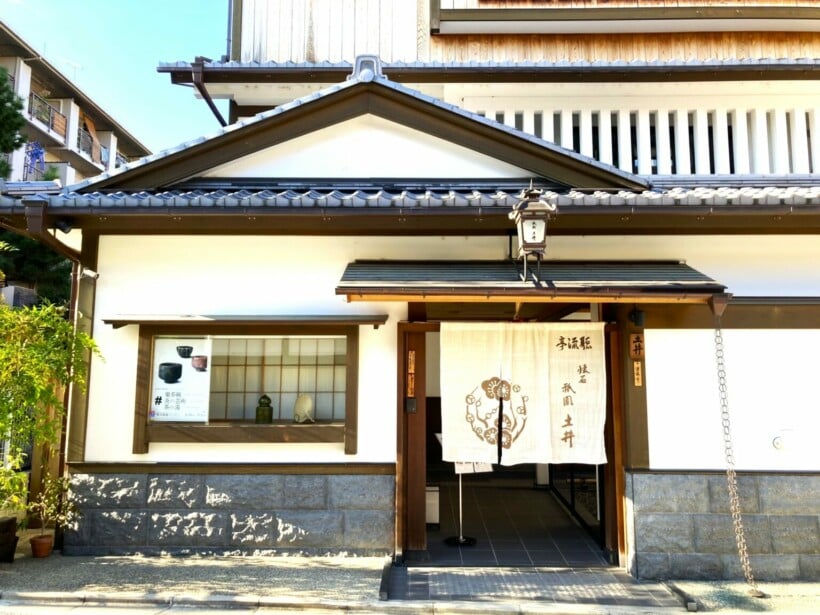
The area is also dotted with Michelin-starred kaiseki restaurants and eateries, where visitors can enjoy authentic, upscale Japanese cuisine.
There are also numerous matcha sweets stores, mainly along Shijo Street. Cafes offer soft-serve ice cream and parfaits made with matcha green tea. Purchasing matcha sweets as souvenirs is also recommended.
The Gion Kobu Kaburenjo is a theater where maiko and geiko perform dances. The “Miyako Odori” dance performance in spring and the “Onjuku-kai” dance performance in autumn are very popular.
▼ Gion Kobu Kaburenjo
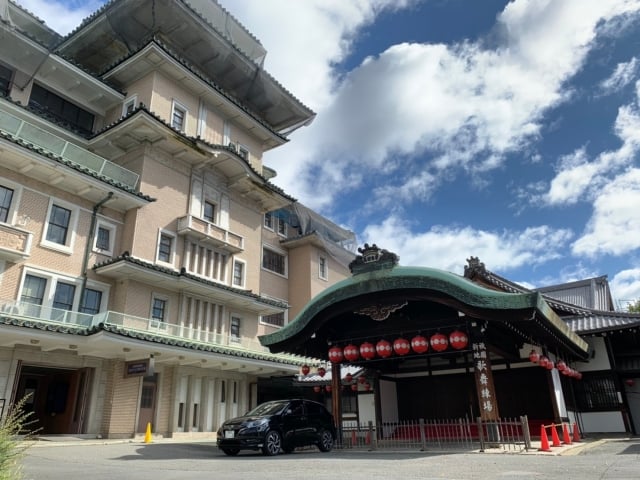
The Yasaka Shrine, known for the Gion Festival in summer, and the Kenninji Zen temple are also located in the area.
How long does it take to walk around Gion?
It depends on your interests, but a solid stroll through Gion should take a good 4 hours.
It takes about one hour to taste the matcha sweets and buy souvenirs in the Gion shopping street.
About 40 minutes to stroll along Hanamikoji Street.
About 30 minutes to 1 hour to visit Kenninji Temple.
Approximately 30 minutes to stroll through the grounds of Yasaka Shrine.
20 minutes to photograph or walk around the Gion-Shirakawa area.
If you want to enjoy Gion to the fullest, you should allow 4 to 5 hours, when you consider other activities like dining, attending theaters, taking zen lessons, etc.
From here, I will introduce the attractions of each area in detail.
The Gion Shopping Street is lined with matcha green tea sweets stores!
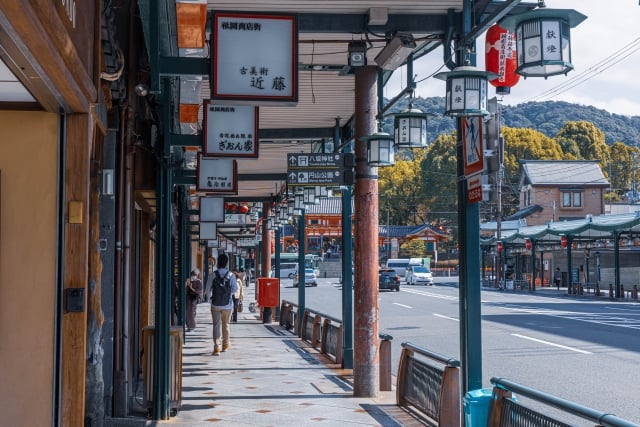
Shijo Street, which runs from Gion-Shijo Station on the Keihan Line to Yasaka Shrine, is named Gion Shopping Street.
Starting with the “Minami-za” theater where you can enjoy Kabuki, restaurants, green tea sweets stores, and souvenir stores line the street. The arcade is a popular sightseeing spot where visitors can enjoy strolling even when it rains.
Especially recommended is a long-established matcha sweets store. Visitors can enjoy a variety of parfaits and soft-serve ice cream made with matcha green tea, as well as buy matcha green tea sweets as souvenirs.
We hope you will try the matcha sweets unique to Kyoto.
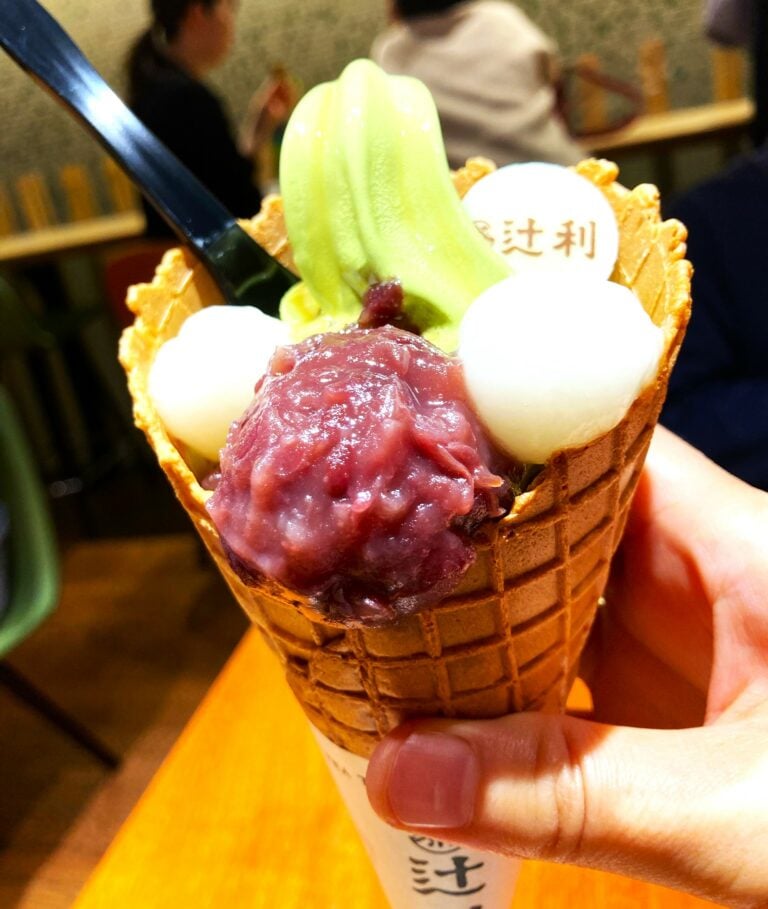
“Hanamikoji” is where you will find ‘ochaya’ (teahouses) with maiko and geiko
As mentioned above, Gion is famous as a “Hanamachi” (flower district) with “ochaya” (teahouses) where maiko and geiko entertain their customers.
Naturally, when sightseeing, you will want to visit an ochaya, but the “ozashiki” (tatami room) where you can enjoy the geisha and maiko’s performances and savor their cuisine is not usually open to the general public.
The ochayas are highly exclusive clubs that only allows special members.
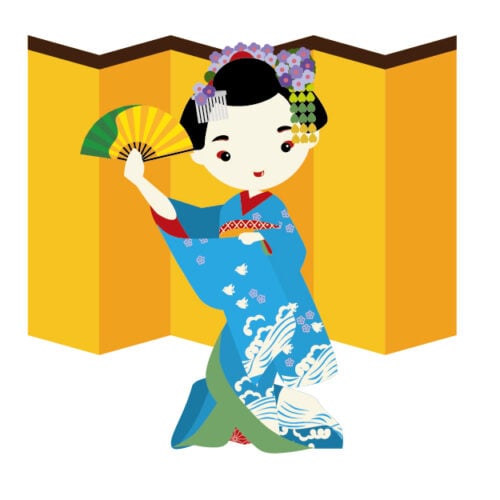
そTherefore, when sightseeing, it is recommended to have a “maiko experience” where you dress up as a maiko or geiko, or enjoy an “ozashiki play experience” for tourists.
https://www.travel-kyoto-maiko.net/utagekaigai
If you go along the Gion Shopping Street for a while, you will see a historical and magnificent teahouse called “Ichiriki Chaya” on Hanamikoji Street on the south side of the street. The teahouse is located on Hanamikoji Street in the south of the Gion shopping district.
▼ Ichiriki Chaya
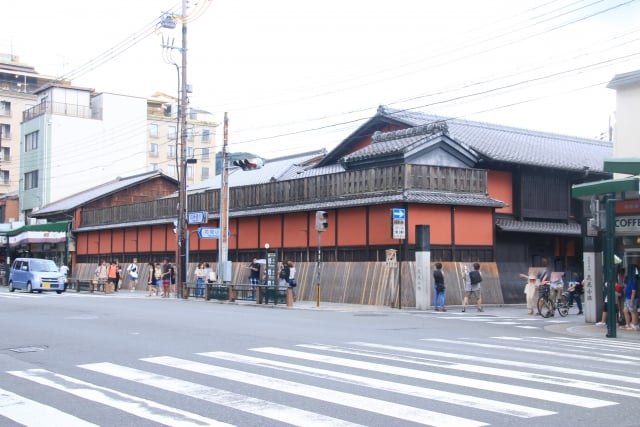
In this area, there is a row of “teahouses” with red lanterns in wooden “machiya” houses, which are unique to Kyoto and create a unique atmosphere of Gion. It is a good place to take a stroll and have your picture taken.
You can sometimes see maiko and geiko walking along the streets, so you can enjoy the unique atmosphere of Gion.
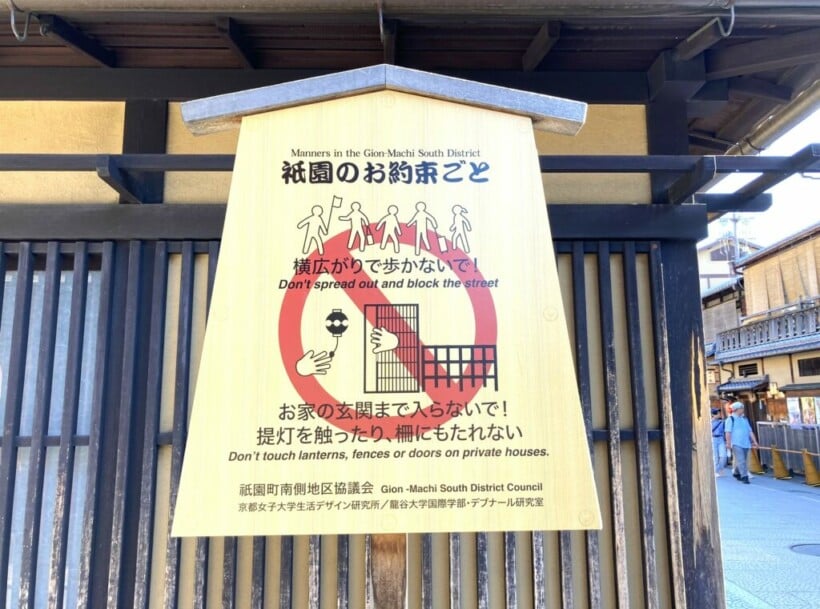
There are signs posted in this area that say “No photography on private roads” and other etiquette-related signs.
One of the most common violations of etiquette is following maiko and geiko around and taking pictures of them.
Since this is an area where local people live and work, please enjoy sightseeing while respecting them.
Gion Kobu Kaburenjo is where the maiko and geiko perform
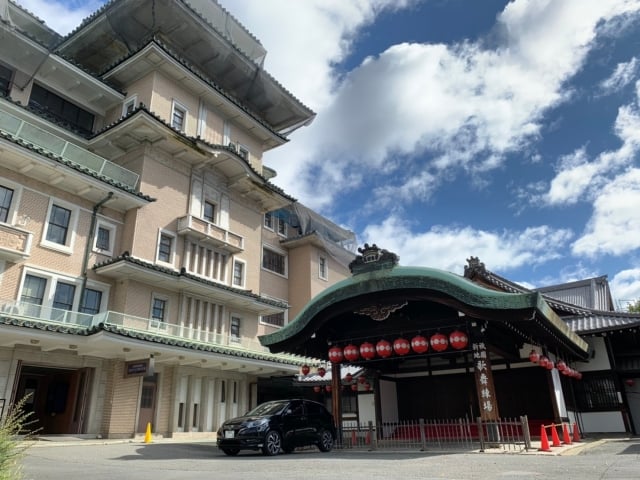
Going south on Hanamikoji Street, you will see the Gion Kobu Kaburenjo Theater on the left, where maiko and geiko perform their dances.
You can see performances of “Miyako Odori” in spring and “Onjuku-kai” in autumn. The building was completed in 1913 and is designated as a Tangible Registered Cultural Property of Japan, so you can also marvel at the architecture as well.
https://miyako-odori.jp/kabukai/
(* Tickets can be reserved on the web.)
In the adjacent Yasaka Kaikan, there is a spot called “Gion Corner” where you can watch traditional Japanese performing arts.
You can enjoy “Kyomai,” a dance originating in Kyoto, “Gagaku,” a type of classical Japanese music, and “Kyogen,” a traditional Japanese performing art that combines satire and humor, in about 1 hour. The best way to experience traditional performing arts is to come and see them up close.
夜は祇園をぶらぶら〜♪
ギオンコーナーで 茶道、箏、華道、雅楽、狂言、京舞、文楽をギュギュッと1時間で楽しませてもらいました!
こんなトコがあるとは!ランチしたお店の女将さんが教えてくれたんだ〜✨🙌✨
駆け足気味だけどビギナーにはピッタリ!今度じっくり観賞してみたいな♪ pic.twitter.com/5veU1hb4HF— トロッコ89号 (@Tramno89) October 5, 2019
As longs as seats are available, reservations can be made directly at the ticket counter on the day of the performance.
https://www.ookinizaidan.com/gion_coner/
Introductory Japanese traditional culture performance: Every day from 7:00 pm for about 1 hour, from 5,500 yen for adults.
*Open every day (Closed on weekends & Mondays during December 1 through the second week of March)
Experience Zen at Kenninji Temple, the oldest Zen temple in Kyoto
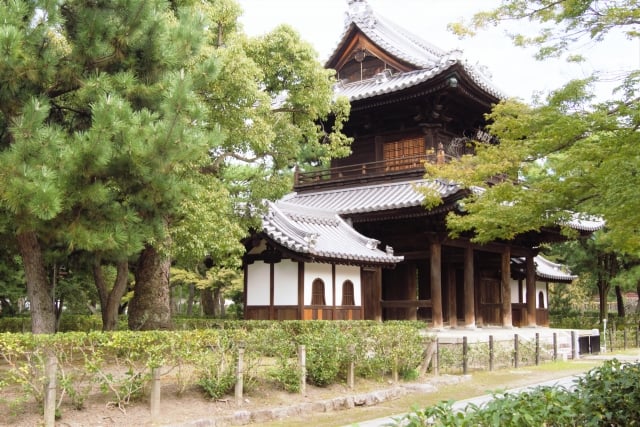
If you walk further south on Hanamikoji Street from the Gion Kobu Kaburenjo, you will come across Kenninji Temple, the oldest Zen temple in Kyoto.
Kenninji Temple is famous for its National Treasure “The Wind and Thunder Gods” and its Karesansui garden, which uses stones and rocks to express nature.
Once you enter the temple grounds, you may forget that you are in Gion, where the air is so tranquil and serene. The atmosphere of authentic Zen temples do take you to another place.
Visitors who are interested in Zen should try their hand at zazen meditation.
https://www.kenninji.jp/
Zazen experience: Every 2nd Sunday of the month, 7:30 – 9:30 a.m. (120 min.)
Zazen (20 min. x 2 times), sutra reading, Dharma talk (free of charge)
Yasaka Shrine, known for the Gion Festival
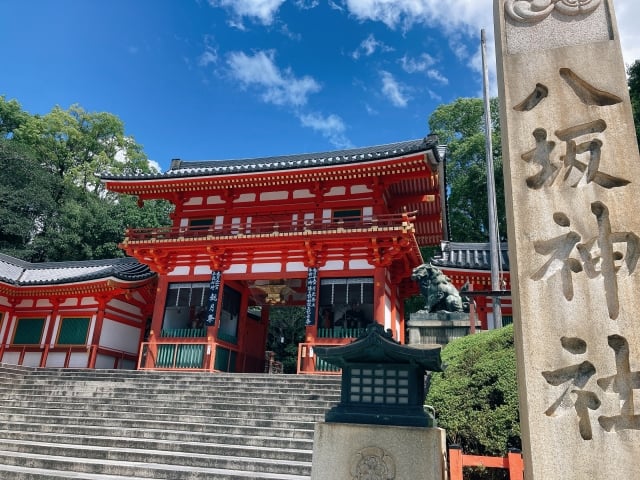
Returning to Shijo Street and heading east, you will see the Yasaka Shrine with its beautiful vermilion-lacquered tower.
The shrine is famous for the Gion Festival, one of Japan’s three major festivals held in July, and is also believed to ward off bad luck.
The main hall and shrine pavilions are national treasures and important cultural assets, and the illumination of the shrine at night is a highlight of the shrine.
https://www.yasaka-jinja.or.jp/
Gion Shirakawa River, one of the most emotional places in Kyoto
The last area to be introduced is the Gion Shirakawa River area, which can be found by returning to Shijo Street and heading north.
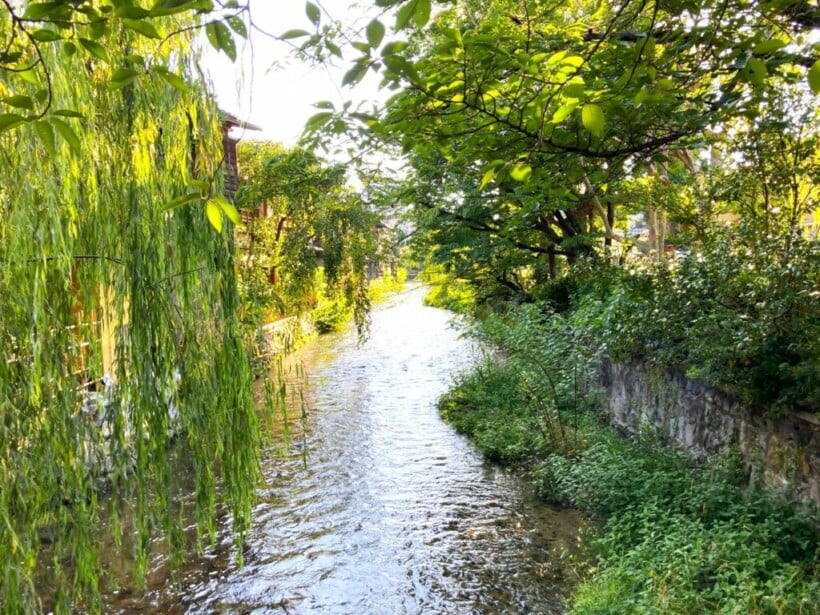
The slow-moving river is a beautiful and elegant sight, and you can feel the four seasons of Japan.
The area around Tatsumi Shrine, where a bridge crosses the Gion Shirakawa River, is a great spot for photographing the contrast between the green and red leaves of the trees and the vermilion-lacquered walls along the river.
In spring, the area is also famous for its cherry blossoms, making it an especially good spot for those looking for a photo-perfect spot.
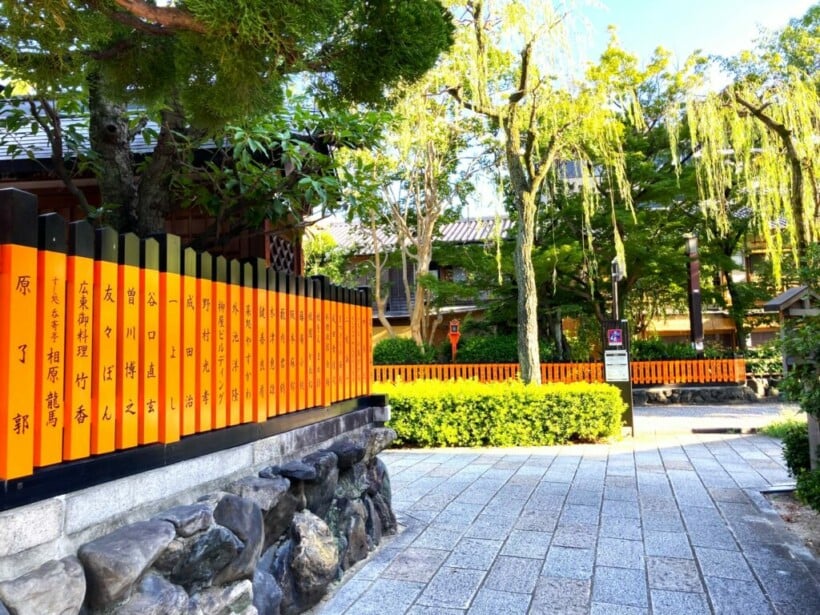
On the north side of Shijo Street, there are numerous restaurants. From udon and okonomiyaki restaurants frequented by locals to gyoza restaurants, sushi restaurants, izakaya (Japanese-style pubs), and fine kaiseki restaurants, you can enjoy a meal at a restaurant to suit your taste.
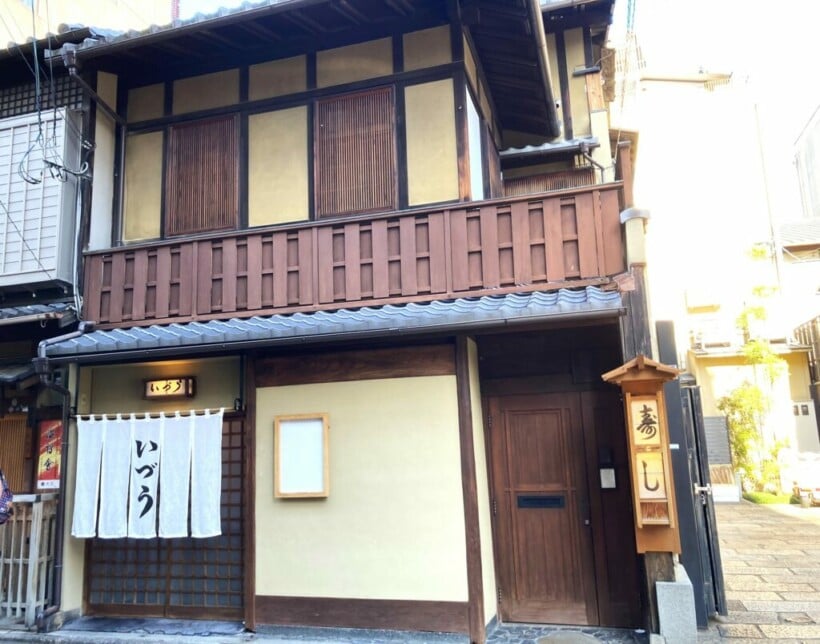
Enjoy the taste of Kyoto’s long-established restaurants.
Enjoy a stroll in Gion, the most elegant area in Kyoto!
As you can see, Gion is the area in Kyoto where the atmosphere of the ancient capital still remains.
You can enjoy strolling around in a space where you can feel the history and take pictures of Kyoto’s typical scenery.
You can also taste delicious food and sweets, visit temples and shrines, see a play, or sit in a Zen meditation room, so be sure to allow plenty of time for a stroll and enjoy Gion to the fullest!


